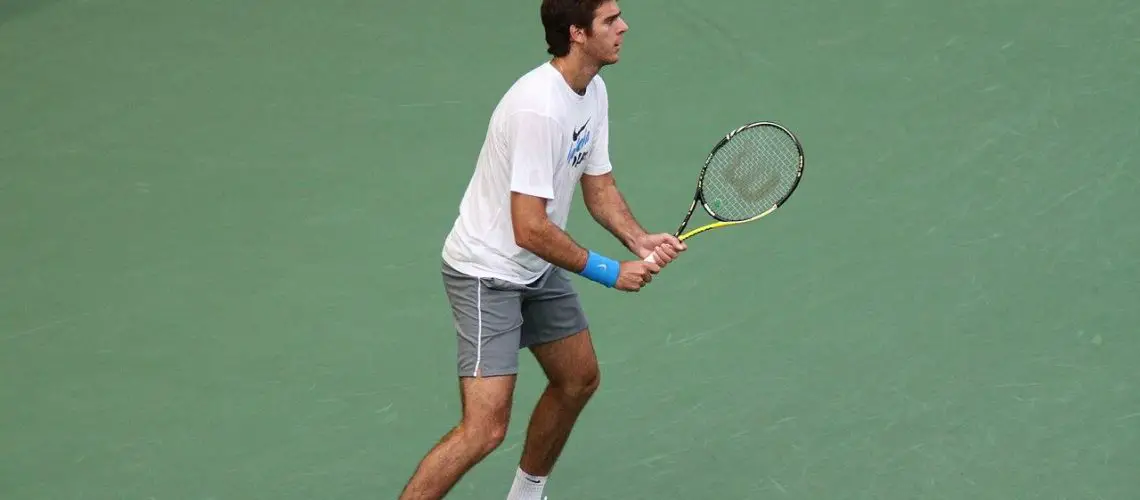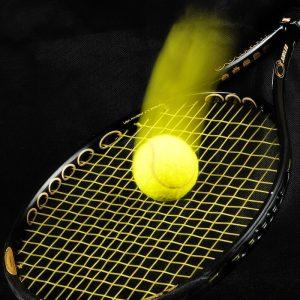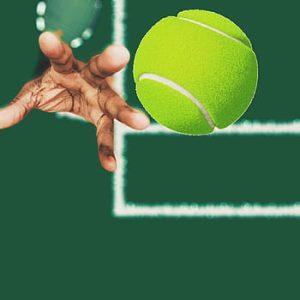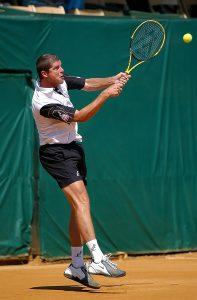We may earn money or products from the companies mentioned in this post.
Introduction to Tennis Terminology

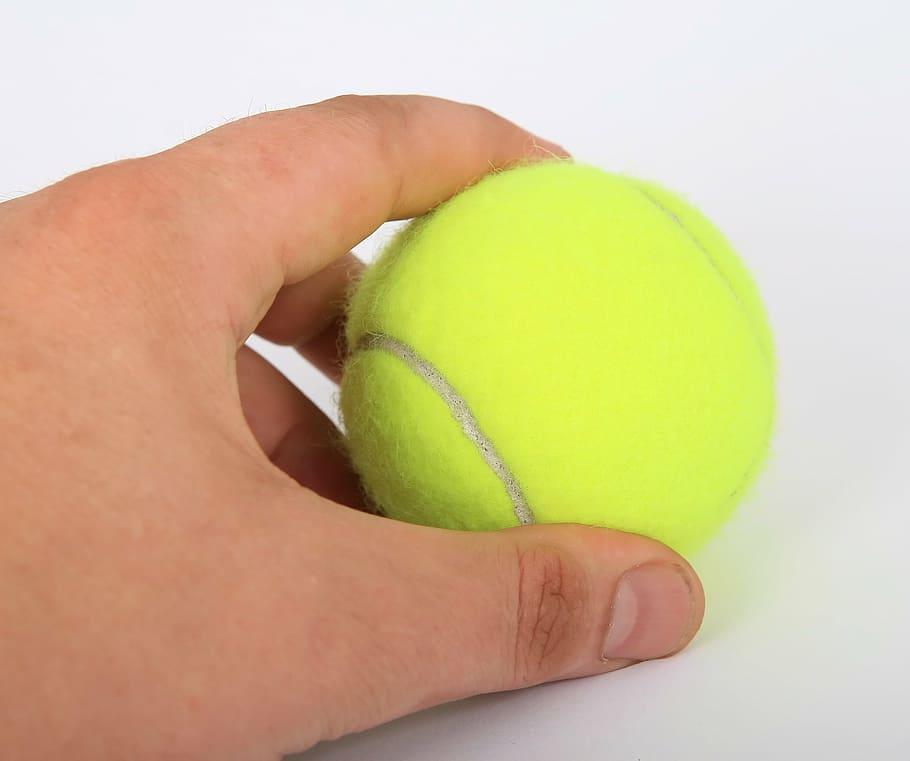
Tennis is a sport that has its own unique language Understanding the terminology used in tennis is essential for both players and spectators alike Whether you’re a seasoned pro or just starting out, having a grasp of tennis terms will enhance your overall experience of the game
The Importance of Understanding Tennis Terms
Imagine watching a thrilling tennis match without understanding what “ace,” “break point,” or “deuce” means It can be confusing and make it challenging to fully appreciate the intensity and strategy behind each shot
Knowing tennis terms allows you to follow and engage in conversations about the game with confidence It enables you to understand the tactics employed by players, analyze their strategies, and appreciate their skillful execution
Additionally, being familiar with tennis terminology helps when reading articles, blogs, or watching matches where commentators often use specific terms to describe key moments or techniques It enhances your comprehension and makes you feel more connected to the sport
The History and Origin of Tennis Language
Tennis terminology has evolved over centuries along with the sport itself The origins of many tennis terms can be traced back to different languages such as French, Italian, and English
For example, terms like “love” for zero points originated from the French word “l’oeuf,” which means egg – symbolizing an egg-shaped zero on scoreboards Similarly, words like “advantage” (ad), meaning advantage-in (or server’s advantage) came from the medieval French term “avantage”
This linguistic fusion reflects the global nature of tennis as a sport played worldwide Each country has contributed its own linguistic flavor to create a rich tapestry of terminology that continues to evolve today
Brief Explanation of the Term “Deuce”
One of the most commonly used terms in tennis is “deuce” It refers to a specific score situation in a game where both players or teams have won three points each, resulting in a tie
When the score reaches deuce, it signals a crucial moment in the game The player or team who wins the next point after deuce gains “advantage” (ad) and needs just one more point to win the game If they fail to win that point, it goes back to deuce, and the battle for advantage continues
The term “deuce” itself is derived from the French word “à deux,” which means “to two” This signifies that both players or teams are equal at three points each and need two more points to secure victory
In summary, understanding tennis terminology is vital for fully enjoying and comprehending this captivating sport By familiarizing yourself with these terms, you enhance your ability to follow matches, engage in conversations about tennis, and appreciate the intricacies of gameplay So next time you’re on or off the court, immerse yourself in the language of tennis and unlock a whole new level of appreciation for this beautiful game
The meaning and significance of “Deuce” in Tennis

When it comes to the game of tennis, there is a particular term that holds immense significance – “Deuce” This word represents a pivotal moment in a match, where both players have reached a score of 40 points each It signifies an equal standing, with neither player having an advantage over the other
Definition of Deuce
In tennis, “Deuce” refers to the situation when both players have accumulated 40 points Traditionally, scoring in tennis follows a sequence of love (0), 15, 30, and then 40 Upon reaching this point, one cannot simply win by scoring one more point; they must secure victory by a two-point margin
How Deuce affects gameplay
The concept of Deuce brings an exciting twist to the game of tennis It intensifies the competitiveness between players as they strive to gain that crucial advantage With each player vying for that elusive two-point lead, it creates a thrilling atmosphere on the court
Furthermore, Deuce has the potential to prolong matches significantly Since winning requires maintaining a two-point lead rather than just one point ahead, it can lead to extended rallies and nail-biting moments for both players and spectators alike
In conclusion,
- “Deuce” in tennis represents equality between players when both have accumulated 40 points
- To win from Deuce, one must achieve victory with a two-point margin
- This aspect adds intensity and competitiveness to matches while also potentially extending their duration
The Origin and Etymology of the Term “Deuce”

Have you ever wondered where the term “Deuce” in tennis comes from? Let’s explore its possible origins and delve into its deeper meaning
Possible Origins from French Language
One theory suggests that “Deuce” may have derived from the French phrase “À deux de jeu,” which translates to “two points away from the game” This phrase was used to indicate a critical moment when only two more points were needed for victory
Another possibility is that “Deuce” simply stems from the French word for two, which is spelled as “deux” This straightforward connection reinforces the significance of this pivotal point in a tennis match
Connection to the Concept of Duality
The term “Deuce” not only has linguistic roots but also carries symbolic weight It reflects the idea of evenly matched opponents, locked in a battle where neither player has gained an advantage It signifies balance and equality within the game
In a Deuce situation, both players are vying for supremacy, with each point becoming increasingly crucial The duality represented by Deuce adds an extra layer of tension and excitement to the match, keeping spectators on edge and players fully engaged
Common Questions about Deuce in Tennis
How Many Times Can Deuce Occur During a Game?
A unique aspect of Deuce is that there is no limit to how many times it can occur during a single game Unlike other scoring situations with defined rules or predetermined outcomes, Deuces can prolong matches, affecting their duration and potentially leading to player exhaustion
Are There Different Rules for Deuces in Various Tournaments?
The rules surrounding Deuces can vary depending on the tournament or competition While most tournaments adhere to the traditional scoring system, some alternative scoring systems have been proposed and implemented in certain events
For example, Grand Slam events may have slightly different rules for Deuce compared to the ATP Tour Finals or other championships These variations add an element of unpredictability and keep players adapting to different formats throughout their careers
Strategies for Winning After Reaching a Deuce Situation
Reaching a Deuce situation presents both challenges and opportunities for players To increase their chances of victory, players often employ specific strategies aimed at gaining an advantage over their opponent
One effective strategy is maximizing serve efficiency This involves serving with precision, power, and strategic placement to create difficulties for the opposing player and potentially secure an advantage during a Deuce point
Additionally, exploiting an opponent’s weaknesses can be another successful approach in breaking free from a Deuce deadlock By carefully analyzing their opponent’s game style and identifying areas of vulnerability, players can strategically target those weaknesses to gain an upper hand
Overall, understanding the origin and significance of “Deuce” in tennis adds depth to our appreciation of this critical moment in a match Whether it originated from French phrases or reflects the concept of duality, it remains an integral part of the game that keeps us captivated by its thrilling uncertainties
Useful Links

Deuce. Meaning in tennis. Definition. Wiki. Terms
Why is Tennis Scored the Way it is? (Tennis Scoring History)
What Is Deuce in Tennis? Meaning, Purpose & FAQs
French and the Language of Love, Deuce, Let and Tennis
What Is Deuce And Advantage In Tennis? – The Racket Life
How to keep score in tennis
The Tennis Scoring System
Deuce | tennis
Tennis Terms and Definitions | USTA
Deuce in Tennis: Meaning, Origin, & Longest Ever – YouTube
What Is Deuce In Tennis?
Tennis scoring system
Why Is Tennis Scored So Weirdly?
How to Keep Score in Tennis
What Is Deuce In Tennis? Meaning, Origin, & Facts
What Does Ad Mean in tennis?
Tennis – Popular Terms
Tennis Scoring 101
Why do you say deuce in tennis
What Is Deuce In Tennis? – Tennis Ball Game
Brief History of Tennis

Tennis, a beloved sport played worldwide, has a rich and fascinating history that dates back centuries The origins of the game can be traced back to ancient civilizations such as Egypt, Greece, and Rome, where variations of tennis were played using hands or rudimentary racquets
However, it wasn’t until the 19th century that tennis as we know it today began to take shape In 1873, Major Walter Clopton Wingfield invented lawn tennis, which quickly gained popularity among the upper class in Britain The first Wimbledon Championship took place in 1877, marking the birth of modern competitive tennis
1 Origins of the Game
The exact origins of tennis are shrouded in mystery, but historians believe that its roots can be traced back to various ball games played by ancient civilizations For example, Egyptians played a game called “tjnn” where they hit a ball with their hands over a net-like structure made from ropes
In medieval Europe, a game known as “real tennis” was popular among nobility It was played indoors and featured complex rules and strategies Real tennis laid the foundation for modern lawn tennis but had significant differences in terms of court dimensions and gameplay
2 Evolution Throughout the Years
Over time, tennis went through numerous transformations to become the fast-paced and globally recognized sport it is today With advancements in technology and changes in playing styles, the game has evolved significantly
In the late 19th century, players began using wooden racquets instead of bare hands or primitive equipment This innovation allowed for more control and power during shots
The introduction of lawn courts with standardized dimensions further enhanced the game’s appeal and facilitated organized tournaments like Wimbledon
Importance of Understanding Tennis Terminology
Understanding tennis terminology is crucial for both players and fans of the sport It not only enhances one’s appreciation for the game but also improves performance on the court
1 Enhance Appreciation for the Sport
Knowing tennis terminology allows spectators to follow matches more closely and understand the strategies employed by players Terms like “ace,” “break point,” and “deuce” add depth and excitement to conversations about the game
Moreover, comprehending technical terms such as “forehand,” “backhand,” and different shot variations helps viewers appreciate the skill and athleticism required to excel in tennis
2 Improve Performance as a Player
For aspiring or seasoned tennis players, understanding tennis terminology is essential for effective communication with coaches, trainers, and fellow players It enables precise instruction during practice sessions, allowing players to refine their technique and strategize more effectively
Familiarity with terms like “topspin,” “slice,” and “footwork” empowers players to analyze their own performance critically, identify areas of improvement, and implement necessary adjustments
The concept of “let” in tennis

When it comes to the game of tennis, there is a unique concept that often comes into play – the “let” This intriguing term refers to a situation where a point is replayed due to interference or hindrance Its primary purpose is to ensure fair play and avoid disputes on the court
Definition and purpose
1 A replayed point due to interference or hindrance:
In certain instances during a tennis match, something unexpected may occur that interferes with the regular flow of play It could be an external factor like an abrupt noise distracting the players or an object unexpectedly landing on the court When such interference happens, players have the option to call a “let,” which means that the point will be replayed from its original position
2 Ensuring fair play and avoiding disputes:
The concept of let exists to promote fairness in tennis matches By allowing for replays when unforeseen circumstances arise, players can maintain a level playing field and avoid any potential disagreements or conflicts that may arise from these situations
Types of let situations
1 Service let: ball touching the net before landing in correct service box:
Serving is one of the fundamental aspects of tennis, and occasionally, even professionals can make mistakes when delivering their serve If during a serve, the ball touches the net but still manages to land within its intended service box, this results in what is known as a service let In this case, players are granted another opportunity to serve without any penalties
2 Other lets: outside interference, ball on court, etc
Apart from service lets, there are various other scenarios where lets come into play during a tennis match These can include instances of outside interference, such as an audience member accidentally stepping onto the court or a ball from a neighboring court rolling onto the playing surface In any situation where external factors disrupt the normal course of play, players can call a let to ensure fairness and avoid any potential advantages gained due to these interferences
In conclusion, the concept of “let” in tennis serves as an essential mechanism for maintaining fair play on the court Whether it’s due to unforeseen interference or hindrance during a point or service, this unique rule allows players to replay points that may have been affected by external factors By understanding and applying the concept of let correctly, players can ensure equitable gameplay and minimize disputes during their matches
Origins of the term “let”

Have you ever wondered where the term “let” in tennis comes from? It turns out that its origins can be traced back to Middle English The word “let” is derived from the Middle English word “letten,” which means to hinder or impede This connection with Middle English reflects the concept of hindrance or obstruction that is inherent in the use of “let” in tennis
Interestingly, the influence of French language can also be seen in the early terminology used in tennis French was widely spoken among the upper classes during medieval times, and it had a significant impact on the vocabulary used in various sports, including tennis In fact, many of the terms used in early tennis were borrowed from French
Related terms and expressions from other sports
The use of “let” as a term for hindrance or interruption is not unique to tennis alone In cricket, there is a similar concept known as a “let ball” A let ball occurs when the bowler delivers a ball that does not make contact with either the batsman’s bat or body before reaching the wicket-keeper In this case, the delivery is considered null and void, and no runs are scored
In badminton, we can also find a similar usage of “let” When playing badminton, if a player serves and their serve hits the net but still lands within their opponent’s service court, it is called a let serve The point is replayed without any penalty to either player This concept is reminiscent of how “let” is used in tennis to indicate an interruption or hindrance during gameplay
Common questions about “let” in tennis

Tennis is a sport that requires precision and adherence to rules One aspect of the game that often raises questions is the concept of a “let” Let situations can occur during service, and it is crucial for players and officials to understand how to identify valid lets Let’s explore some common questions surrounding this topic
How to identify a valid let situation
-
Umpire’s role in determining a let call:
The umpire plays a vital role in deciding whether a let has occurred They consider factors such as whether the ball hit the net on its way over, if it was an obstructive serve, or if there was interference from another player -
Player’s responsibility to understand rules and make appropriate calls:
It is also important for players to be aware of the rules regarding lets They should know when to call a let themselves if they believe one has occurred, especially in situations where an umpire may not be present
Consequences for not adhering to let rules
-
Penalties and sanctions for players:
Failing to adhere to let rules can result in penalties or sanctions for players If a player deliberately ignores a let situation or consistently fails to call lets correctly, they may face consequences such as warnings, point deductions, or even disqualification -
Impact on match outcome and overall fairness:
Not adhering to let rules can have significant implications on the outcome of a match and overall fairness A missed or incorrectly called let could potentially alter the course of play, favoring one player over another unfairly
Modernization efforts regarding Let calls
-
Use of technology (eg, electronic line calling system):
In recent years, tennis has embraced technological advancements to enhance the accuracy and fairness of let calls Electronic line calling systems have been implemented in some tournaments, reducing the reliance on human judgment and potentially eliminating let-related controversies -
Debates on whether to eliminate service lets:
There are ongoing debates within the tennis community about whether to completely eliminate service lets Some argue that it would simplify the game and reduce potential disputes, while others believe that service lets add an element of unpredictability and strategy to the sport
Understanding let rules is crucial for both players and officials in ensuring a fair and enjoyable tennis experience By familiarizing themselves with the guidelines surrounding valid let situations, players can make informed decisions during matches, leading to a more equitable competition
Useful Links

What Does Let Mean In Tennis?
Serve (tennis) – Wikipedia
What is a Let in Tennis?
A Let in Tennis Can Be Called For a Variety of Reasons
What Is A Let In Tennis? Definition & Meaning On …
What Is A Let Call In Tennis?
Let it be – some tennis words of wisdom
Let & Net In Tennis: What Does It Mean?
What Is a Let in Tennis: A Comprehensive Guide
Tennis Rules: When To Call A Let, Or Simply Let It Go
Why is it called a Let
How Many Lets Are Allowed In Tennis? – The Racket Life
What is a Let in Tennis
THE CODE The Players’ Guide to Fair Play and the …
Tennis Rules Explained – The Basics of Tennis
How Many Let Serves Are Allowed In Tennis? My Helpful …
TENNIS RULES
Rules of Tennis | Wanless Park Tennis
Breaking the Rules: letting go of the let serve

